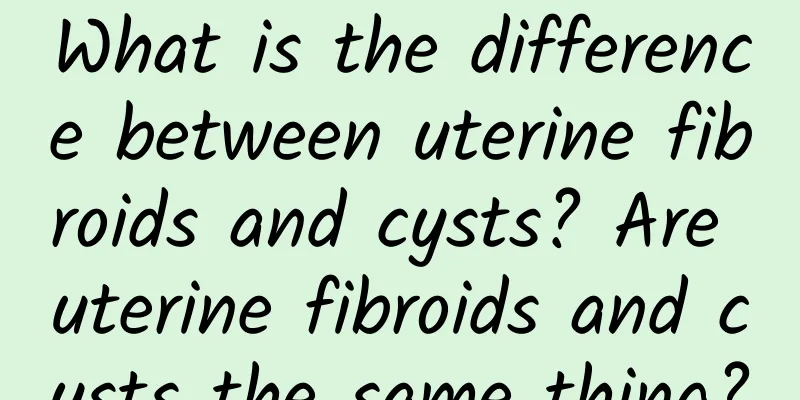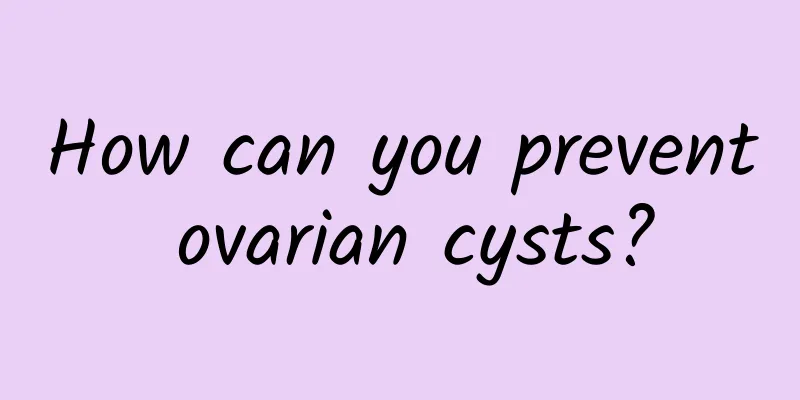What is the difference between curettage and painless abortion? What are the harms of doing too much painless abortion to the body?

|
Painless abortion and uterine curettage are both common abortion surgeries. Although they are similar in some ways, there are also some differences. At the same time, long-term and frequent painless abortion surgeries may cause some harm to the body. This article will explore the differences between uterine curettage and painless abortion, and analyze the potential harms of long-term use of painless abortion. 1. Uterine curettage vs painless abortion: the difference between surgical methods Uterine curettage is a surgery that completely removes the fetus, placenta and other materials by curettage. It needs to be performed under general or local anesthesia, and sometimes auxiliary drugs are needed to help dilate the cervix. Painless abortion, on the other hand, uses drugs to expel the embryo without surgery. These are two different surgical methods, suitable for different situations. 2. Surgical risks: Painless abortion is safer Uterine curettage surgery requires dilation of the cervix, which carries risks such as bleeding and infection. Painless abortion does not require surgery, which reduces surgical risks. The risk of painless abortion surgery in a regular hospital is relatively low. However, both uterine curettage and painless abortion need to be performed under the guidance of professional doctors to minimize risks. 3. Recovery process: Uterine curettage may take longer Uterine curettage is a more invasive surgery and may take longer to recover. Because the uterine cavity is scraped, it takes a certain amount of time to repair the trauma. Painless abortion surgery is relatively gentler and the recovery time is relatively short. 4. Potential harms of long-term painless abortion Although painless abortion surgery is relatively safe, it may cause some harm to the body if it is performed frequently. Frequent stimulation of the cervix and uterine cavity may cause problems such as cervical relaxation and uterine cavity narrowing. In addition, postoperative hormonal changes may also have adverse effects on the body. Uterine curettage and painless abortion are common termination of pregnancy surgeries. They differ in terms of surgical methods, risks, and recovery processes. Painless abortion is relatively safe, but excessive and frequent painless abortions may cause some potential harm to the body. Therefore, when choosing to terminate a pregnancy, you should make a suitable decision under the guidance of a doctor, taking into account your personal situation and risks. |
Recommend
Zhiling and Big S use bananas to lose weight! Nutritionist: You will fail.
Although some people may suffer from allergies du...
Is running a good medicine that can cure diseases? Running helps you avoid 7 diseases and stay healthy
Every day I tell my patients, "Exercise is y...
How to care for Bartholinitis
How to take care of yourself if you have Bartholi...
How to use medicine for female cervical erosion 5 ways to improve the efficacy of cervical erosion
For women with cervical erosion, there are curren...
Abnormal bloody vaginal discharge after menopause
Abnormal vaginal discharge with blood after menop...
Can early-stage endometriosis be cured?
Endometriosis is one of the main causes of female...
Is it necessary to take B vitamins to lose weight and get rid of fat? Pharmacist: Smartly combine these tough guys to promote metabolism and remove toxins
Some people think that losing weight means eating...
Mandatory labeling of beef with clenbuterol Chiu Wen-ta: Three directions to start
The issue of ractopamine in American beef has bee...
What are the reasons for missed menstruation? What issues should be paid attention to?
What are the reasons for delayed menstruation? 1....
You can still eat delicious food while fasting to lose weight. It’s easier to gain weight when you’re hungry! South Korean goddess Son Ye-jin 5:2 intermittent fasting, 4 keys to weight loss
Son Ye-jin, who has the title of "Korean God...
What does vaginal discharge cleanliness level 2 mean? Vaginal discharge is normal
If the cleanliness level of female vaginal discha...
Can abortion be cured? Treat the symptoms
Miscarriage can be cured as long as the main caus...
There are two main types of dysmenorrhea
Dysmenorrhea is something that female friends oft...
How much do you know about the early symptoms of ectopic pregnancy?
How much do you know about the early symptoms of ...
Ovarian cyst torsion compressing the uterus
Ovarian cyst torsion compressing the uterus is a ...









